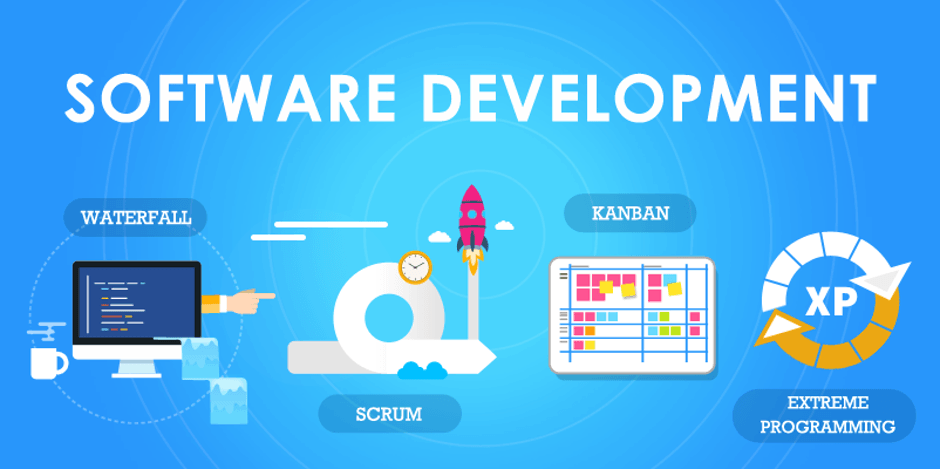As artificial intelligence (AI) continues to evolve, its integration into our daily lives expands. Yet, as powerful as these technologies are, making them more relatable and accessible to humans remains crucial. The concept of humanizing AI aims to bridge the divide between cutting-edge technology and human interaction through more natural and intuitive engagement. Such advancements help ease the understanding and use of AI systems. For instance, developing tools like the AI-powered text humanizer illustrates how AI can retain complex features while engaging users with a human-like touch, making interactions seamless and accessible.
Humanizing AI goes beyond just enhancing capabilities; it fosters trust and creates a seamless user experience. It involves a multifaceted approach where technology augments human interaction rather than replaces it. Consider scenarios like automated call centers where AI provides prompt, accurate responses. A well-humanized system could transform typically impersonal interactions into engaging, productive conversations using natural language processing and emotional cues. AI humanization is about making artificial intelligence systems feel less mechanical and more like an intuitive tool that users can relate to easily. It is achieved by incorporating natural language processing, emotional recognition, and adaptable user interfaces to facilitate smoother exchanges. By embedding these capabilities into AI systems, developers aim to create an environment where technology interacts with humans in a manner reminiscent of human-to-human communication — friendly, concise, and full of understanding.
Key Takeaways:
- Humanizing AI involves creating technology that is understandable and relatable to humans.
- The process entails considerations of ethics, emotional intelligence, and user-centered interactions.
- Humanized AI systems have the potential to enhance user experiences and establish trust.
Why Humanizing AI Matters
Creating user-friendly AI solutions is crucial for the widespread adoption and effective utilization of technology, as they enhance the user experience and drive engagement. When AI systems are designed intuitively, users can easily understand their functions, which fosters trust in their processes. As AI technologies gain ubiquity across various sectors, including healthcare, finance, and customer service, the ability to interact with these systems seamlessly transforms from a desire into a necessity. This rising demand for intuitive technology aligns with the evolving expectations of users who seek solutions that are not only relevant and personalized but also adaptable to their individual needs and preferences. Understanding this dynamic is essential for developers and businesses aiming to leverage AI effectively in today’s competitive landscape.
Ethical Considerations in AI
Ethics play a pivotal role in the development of artificial intelligence (AI), as they ensure that these systems operate in a manner that is fair, unbiased, and aligned with societal values. Responsible AI development is not only about technical implementation but also about a strong commitment to key principles including fairness, transparency, accountability, and privacy. Fairness involves recognizing and mitigating biases that can arise during data collection, model training, and deployment, leading to equitable outcomes for all users. Transparency entails making the functioning of AI systems understandable to both developers and end-users, thereby empowering them to trust and engage with these technologies. Furthermore, accountability ensures that developers and organizations are responsible for the implications of their AI systems, fostering a culture of ethical responsibility. Privacy is foundational to gaining user trust, protecting sensitive information from misuse. In alignment with these principles, the BBC’s guidelines for AI ethics emphasize the need for developers to prioritize ethical standards while designing AI systems. By incorporating these guidelines, developers can effectively address pressing real-world issues such as bias and discrimination, ensuring that AI applications contribute positively to society rather than perpetuating existing inequalities.
Emotional Intelligence in AI
Incorporating emotional intelligence in artificial intelligence systems enhances their ability to accurately recognize and respond to human emotions, which is crucial in various applications. For instance, customer service bots equipped with emotional intelligence can assess emotional cues such as tone of voice and facial expressions, allowing them to provide more empathetic responses and improve customer satisfaction. Similarly, educational tools that adapt to students’ emotional states can create a more engaging learning environment, fostering better academic outcomes.
Despite the significant promise of emotionally intelligent AI, developing such systems presents formidable challenges. Machines often struggle to grasp the complexities of human emotions, which are influenced by various factors, including cultural context and personal experiences. To effectively integrate emotional intelligence into AI, sophisticated algorithms are required—algorithms that can process vast amounts of data and continuously learn from new inputs. Utilizing machine learning and natural language processing, these algorithms must be designed to decipher and adapt to the subtleties and nuances inherent in human emotional expression, thus enabling AI systems to engage more meaningfully with users.
Designing Intuitive Interactions
To achieve an authentic human-like experience, AI systems must be designed with user-centric interfaces and advanced language processing capabilities. User-centric design refers to the approach where users’ needs, characteristics, and preferences are the primary focus of the development process. It includes integrating intuitive navigation, accessible layouts, and clear visual cues, making it easier for users to interact with the system.
Furthermore, highly responsive language processing plays a crucial role in how AI systems interpret and generate responses to user inputs. This includes utilizing natural language processing (NLP) techniques that allow the AI to understand context, sentiment, and nuances in user communication. Techniques such as sentiment analysis and context-aware dialogue management can facilitate a more dynamic conversation, allowing the AI to address user queries effectively and appropriately.
By embracing these comprehensive design practices, developers can enhance the quality of user interactions, making them more fluid and seamless. It improves user satisfaction and fosters a deeper connection between the user and the AI. Ultimately, the objective is to create AI systems capable of predicting, understanding, and adapting to users’ varying needs, which leads to a personalized experience that is relevant and meaningful for each user. This approach also encourages continuous learning and improvement of AI systems based on diverse user interactions, thereby enhancing their effectiveness over time.
Case Studies of Humanized AI
Numerous companies have successfully harnessed humanized AI to significantly enhance user experiences across various industries. Virtual assistants such as Siri, Google Assistant, and Alexa are prime examples of groundbreaking advances in this field, offering a range of interactive functionalities that closely mimic human-like engagement. These voice-activated technologies are equipped with sophisticated natural language processing capabilities, allowing them to handle tasks from simple inquiries and information retrieval to complex scheduling and reminders. Furthermore, they can learn from user interactions, becoming more personalized and efficient over time. As a result, these tools have become indispensable in everyday technology interactions, providing valuable assistance in both personal and professional settings. Their ability to maintain a conversational tone while delivering accurate information ensures that users receive meaningful support whenever needed, thereby improving overall productivity and satisfaction.
Challenges in AI Humanization
Humanizing AI presents numerous challenges that must be addressed to create systems capable of interacting with humans in a meaningful way. Among these challenges are technological limitations, such as the computational power required to process complex human behaviors and the necessity for vast and diverse datasets to effectively train machine learning algorithms. Accurately capturing the intricacies and subtleties of human emotions and behavior and replicating them in artificial systems is a formidable task, as it requires not only advanced modeling techniques but also an understanding of psychology and social interactions. Nonetheless, ongoing research and development initiatives, including advancements in deep learning, natural language processing, and affective computing, aim to overcome these barriers. These efforts are focused on creating AI systems that can learn from user interactions, react appropriately to emotional cues, and engage in more human-like communication, thereby enhancing their precision and empathy. Such innovations are fundamental in making AI an even more integrated and beneficial part of human life, potentially transforming industries such as healthcare, education, and customer service.
The Future of Humanized AI
Emerging trends in artificial intelligence (AI) highlight a significant shift towards increased personalization and a more human-like quality in technology interactions. Future advancements are projected to feature enhanced contextual understanding, enabling AI to interpret and respond to user needs more accurately. Recent insights from a comprehensive industry report suggest that innovations in AI are progressing towards systems that not only detect sentiment but also incorporate empathy and cultural understanding. This evolution paves the way for sophisticated human-machine partnerships that can adapt to diverse user backgrounds, preferences, and emotional states. As a result, this transformation promises to redefine AI’s role in our lives, allowing it to assist us in more meaningful ways by addressing our needs with unprecedented awareness and cultural sensitivity, ultimately enhancing user experience and satisfaction.




